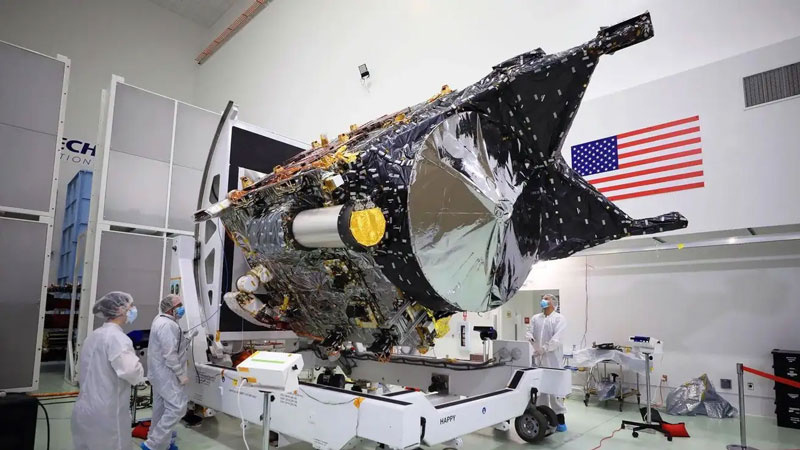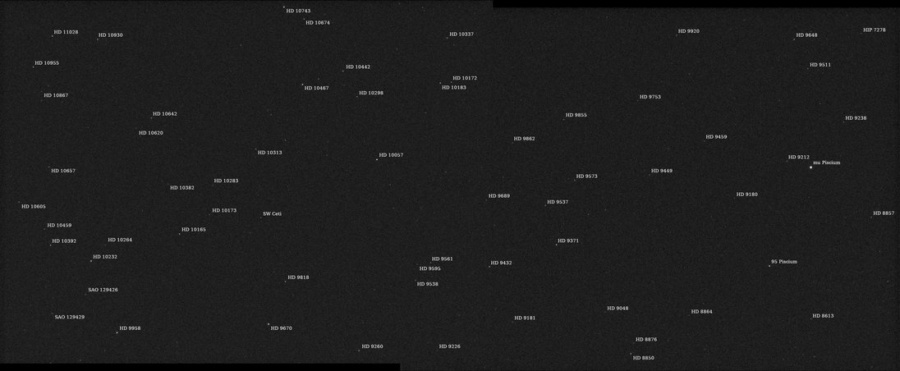
NASA’s interplanetary station Psyche has transmitted the first images from its cameras to Earth. Calibration and testing showed that the multispectral cameras (the spacecraft has two identical ones) are working within normal limits and are ready to perform the mission. Checking other systems also raised no questions. The device will begin its scientific work in 2029, fully armed.
The Psyche station was launched into space on October 13, 2023. The goal of the mission is to reach the asteroid of the same name between the orbits of Mars and Jupiter. This will happen in 2029. It is assumed that the Psyche asteroid is the core of an unformed planet that has not changed since the birth of the Solar System. The study of such an object can give us an idea of the structure of the Earth’s core, which we simply cannot reach, even though it lies under our feet.
The Psyche station has been on the road for about eight weeks. The first light – the first images from a pair of cameras – was received on December 4. The cameras captured images of the star field in the constellation Pisces. Since the station’s twin cameras are multispectral, which will help to identify minerals and metals on the asteroid’s surface, the images are taken through a series of light filters. The entire system required testing and calibration, which the NASA team of engineers successfully accomplished. A total of 68 pictures were taken. Thanks to a pair of identical cameras, it will be possible to create the most accurate 3D map of the asteroid’s surface.

The cameras will be turned on again during the Mars flyby. This will happen in 2026. In addition to taking images, the station’s scientific instruments will collect other information. For example, it was only in space that an ultra-sensitive magnetometer was fully tested. On Earth, it gave an error due to the magnetic field of the planet, but in outer space at a distance of more than 10 million kilometers, it was possible to fully test it. The station itself and its electronic devices, by the way, as the engineers made sure, do not affect the magnetometer readings, which is important for future measurements of the parameters of the apparently metallic asteroid.
A magnetometer on board the station will monitor the space weather all the way. It is able to capture the emissions of the Sun’s coronal mass and has done so repeatedly since its launch. This will enrich our knowledge of the solar plasma far beyond Earth’s orbit.
Other achievements of the station include the launch of two of the four main ion engines on November 8. This is the first ever use of rocket engines for the Hall effect in deep space. So far, they have been used only on spacecraft entering the lunar orbit. By ejecting xenon gas ions, the ultra-efficient engines will carry the spacecraft to the asteroid (a distance of 3.6 billion km) and help it maneuver in its orbit.
On November 14, the station conducted the first laser communication session from relatively deep space – from a distance of about 16 million km. The Deep Space Optical Communications (DSOC) facility was operating, transmitting a data packet to Earth and receiving a return transmission. It was the farthest demonstration of optical communication in history.
Finally, the Psyche team also successfully turned on the gamma radiation detector in the third scientific instrument, a gamma and neutron spectrometer. Then, around December 11, the neutron sensors of the instrument will be turned on. All these features will help the team identify chemical elements.

